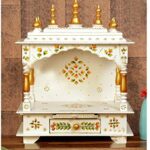Rahu and Ketu in Astrology
In the realm of astrology, Rahu and Ketu are two enigmatic celestial entities that hold a unique place in Vedic astrology, also known as Jyotish. Unlike the planets and luminaries in the solar system, Rahu and Ketu are not physical entities, but rather lunar nodes, points in the sky where the Moon’s orbit intersects the ecliptic. This blog explores the significance of Rahu and Ketu in astrology, their mythological origins, and their influence on the horoscope.
Mythological Origins
The stories of Rahu and Ketu are deeply rooted in Hindu mythology. According to one narrative, the Devas (celestial beings) and the Asuras (demons) churned the cosmic ocean to obtain the elixir of immortality, known as the Amrita. During this churning, Dhanvantari, the divine physician, emerged carrying the Amrita. A fierce battle ensued between the Devas and the Asuras over the Amrita, with Lord Vishnu intervening to help the Devas.
Deceit played a pivotal role in the saga, with an Asura named Swarbhanu disguising himself as a Deva to obtain the Amrita. However, the Sun and the Moon, Surya and Chandra, recognized Swarbhanu’s deception and alerted Lord Vishnu. Vishnu swiftly severed Swarbhanu’s head with his Sudarshana Chakra, but not before Swarbhanu had sipped a drop of the Amrita. As a result, Swarbhanu’s body was split into two parts, becoming Rahu and Ketu, who continued to influence the celestial bodies, particularly the Sun and the Moon.
Astrological Significance
Rahu and Ketu are regarded as shadow planets in Vedic astrology, and they carry immense karmic significance. They are associated with the lunar eclipse, which occurs when the Earth casts its shadow on the Moon, causing a temporary disappearance of the lunar surface. In astrology, this eclipse is considered a potent time for reflection, transformation, and the release of karmic energies.
Rahu, the North Node, is often referred to as the “Dragon’s Head” or “Ascending Node.” It is associated with worldly desires, ambitions, obsessions, and materialistic pursuits. When Rahu is prominently featured in a person’s birth chart, it can signify intense desires and a relentless pursuit of goals. Rahu’s influence can lead to both positive and negative outcomes, depending on its aspects and placement in the horoscope.
Ketu, the South Node, is known as the “Dragon’s Tail” or “Descending Node.” It is associated with spirituality, detachment, and liberation from the material world. Ketu’s influence encourages introspection, meditation, and a quest for spiritual wisdom. A strong Ketu presence in a birth chart can indicate a person who may be less concerned with material success and more focused on spiritual growth and enlightenment.
Rahu and Ketu in the Birth Chart
Rahu and Ketu are always positioned opposite each other in a birth chart, with their placement across the 180-degree axis being significant. The houses they occupy, the signs they are in, and their aspects to other planets can greatly influence an individual’s life path and karmic journey.
For instance, if Rahu is in the first house of a birth chart, the person may be highly ambitious, driven to make a significant impact on the world. However, they may also face challenges related to ego and self-identity. On the other hand, a strong Ketu influence in the seventh house may indicate a person who seeks deeper spiritual connections in their relationships, possibly leading to a sense of detachment from the material aspects of partnership.
Rahu and Ketu’s transits also play a crucial role in astrological predictions. Their movement through the zodiac can trigger significant life events and shifts in one’s karmic journey. Astrologers often analyse these transits to offer guidance and insights into the challenges and opportunities that may arise during specific periods.
Conclusion
Rahu and Ketu, the shadow planets of Vedic astrology, add depth and complexity to the astrological landscape. Their karmic influence on an individual’s life is profound, and understanding their positions and transits can provide valuable insights into the journey of the soul. Whether guiding us toward worldly success or spiritual enlightenment, Rahu and Ketu remind us of the intricate interplay between destiny, desires, and the divine in the grand tapestry of life.


Industrial Vastu: Enhancing Productivity and Prosperity in Your Factory

Vastu Directions: Unlocking the Secrets to Prosperity in Vastu Shastra




